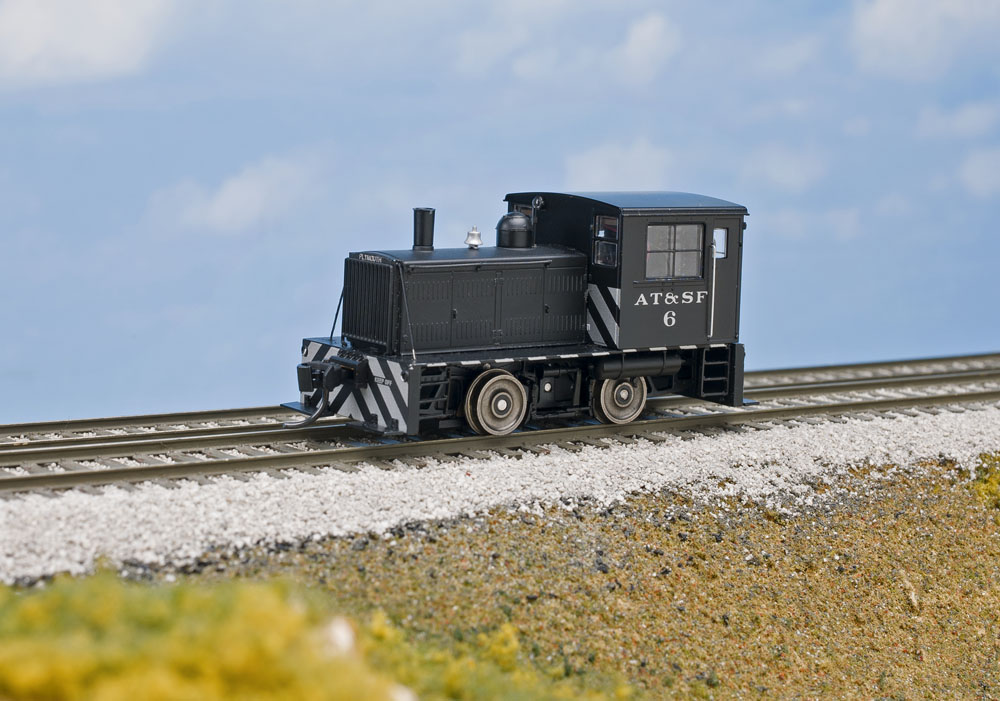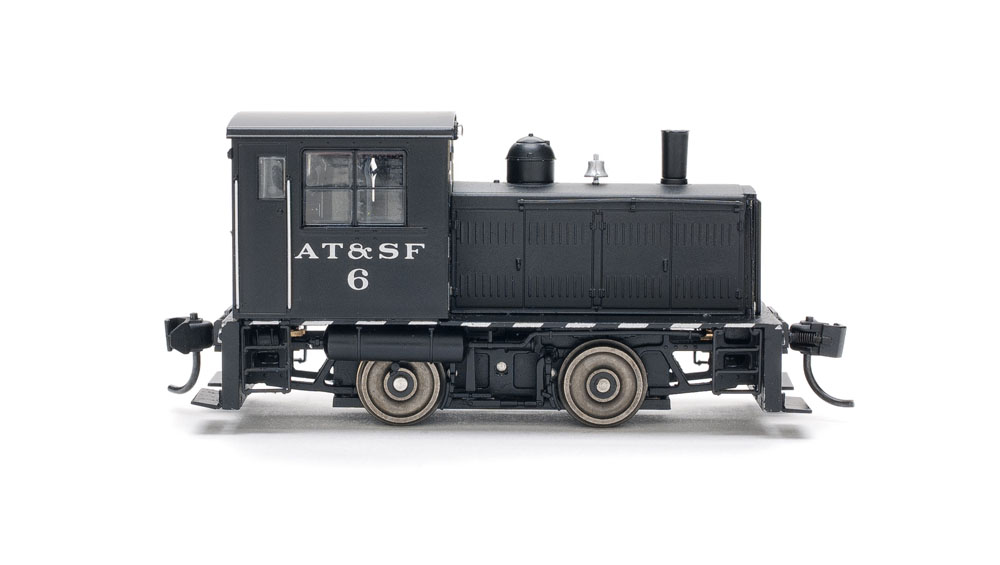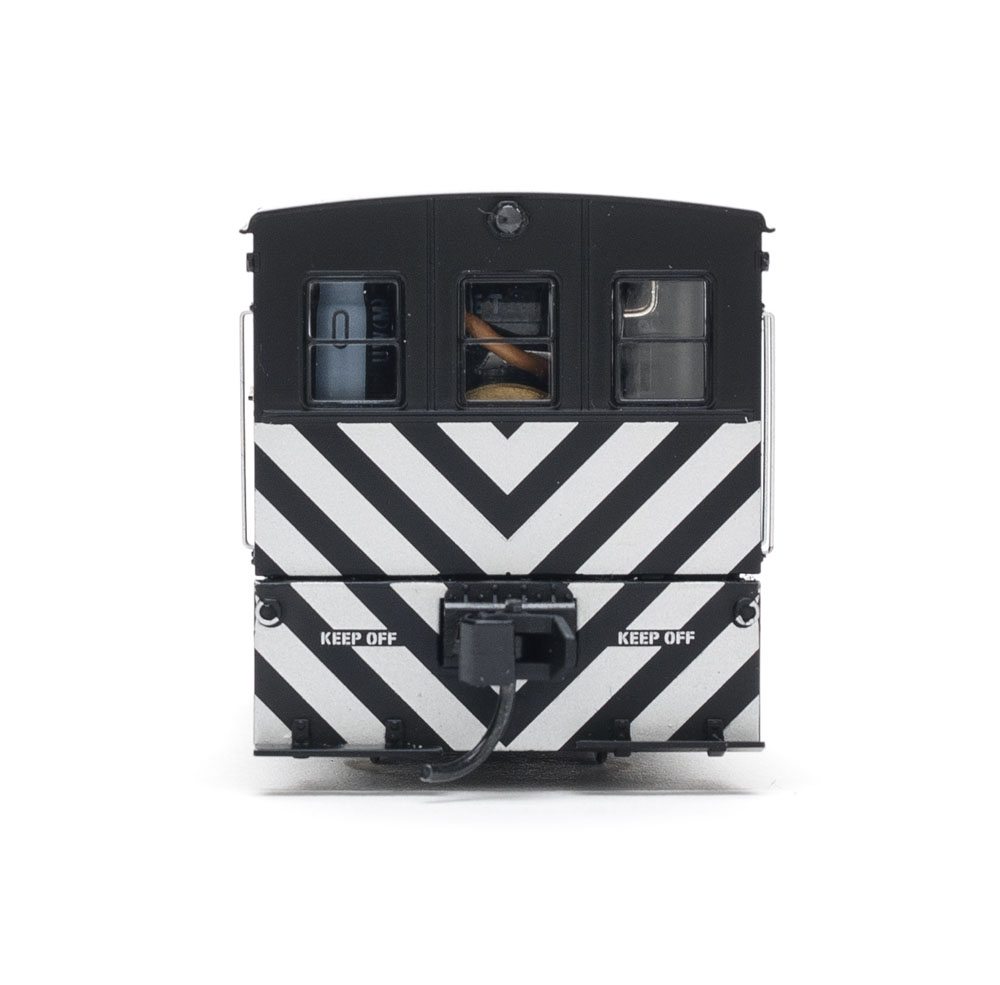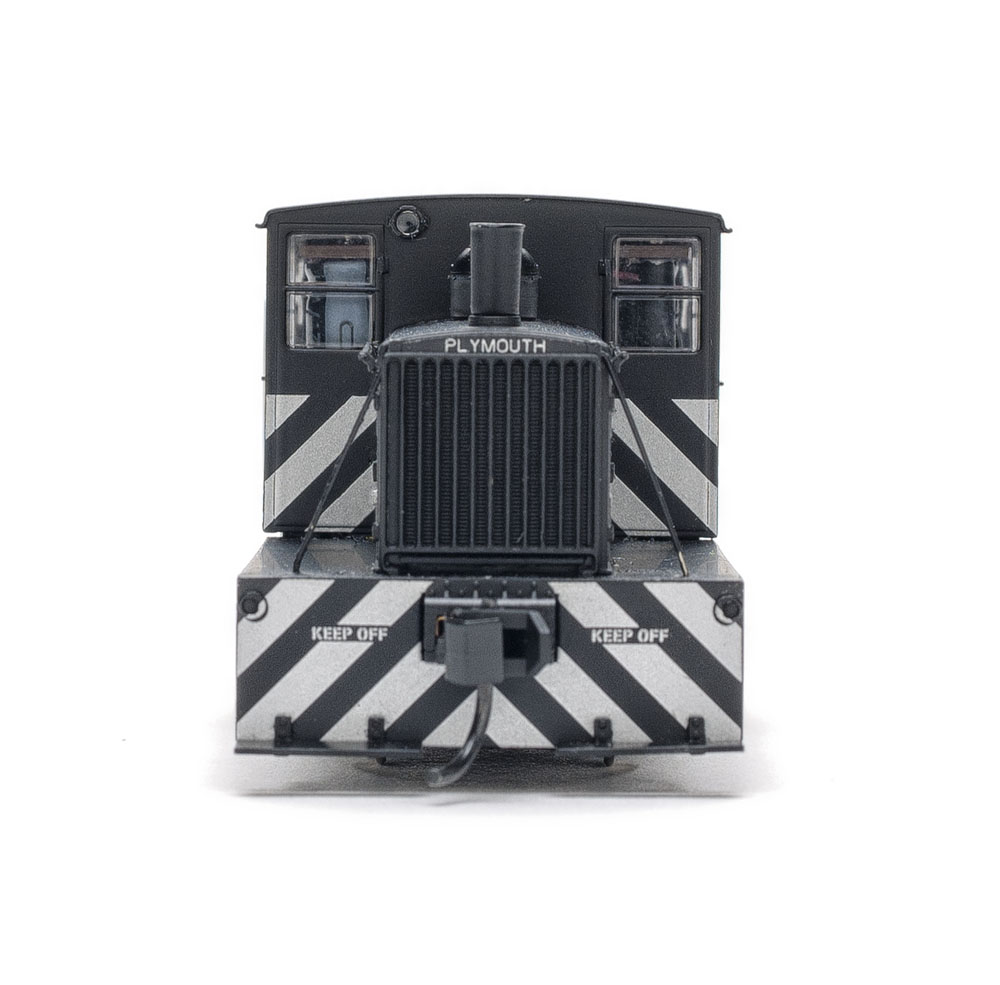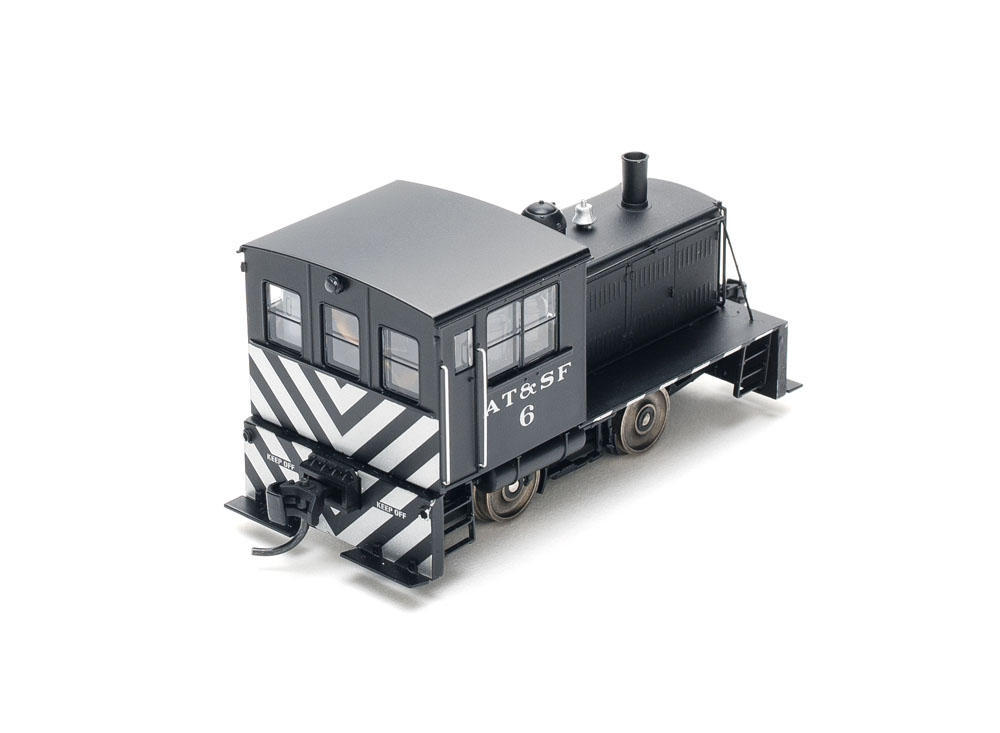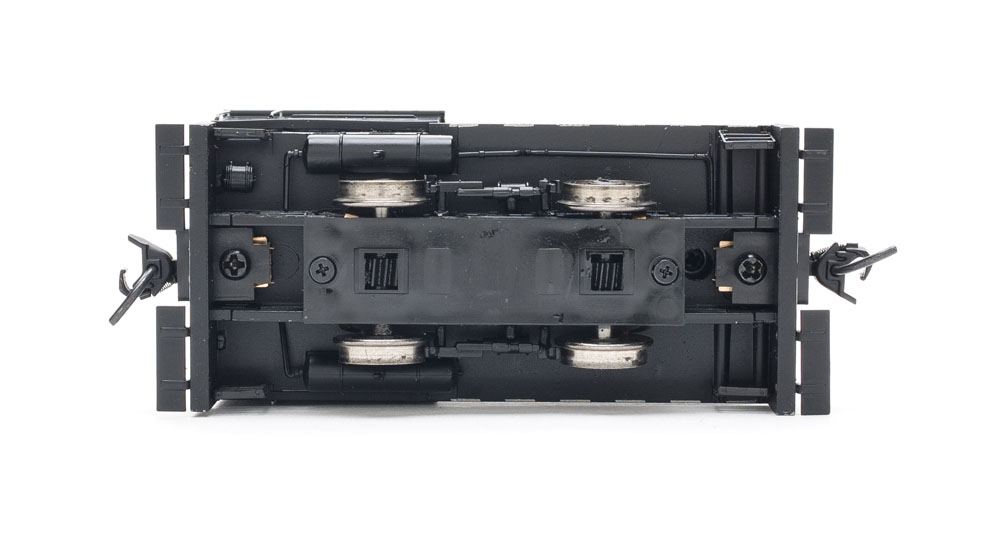Small switchers such as the Plymouth ML-8 toiled away for decades at various trackside industries and railroad shops. Walthers is releasing an HO scale model of a Plymouth ML-8, and I recently had a chance to examine and operate a pre-production sample. From what I saw, this “critter” is a winner.
Prototype. Under the name J.D. Fate Co., the first locomotive rolled out of the plant at Plymouth, Ohio in 1910. The company that eventually became the Plymouth Locomotive Works built more than 7,500 industrial locomotives for customers worldwide until the company was sold in 1997. Although Plymouth designed some heavier locomotives, most of those sold weighed 25 tons or less.
Like many industrial locomotive builders, Plymouth offered several models that could be further customized to meet a customer’s specifications. The basic dimensions of the Walthers model match those of a prototype diagram for an M-series locomotive in a Plymouth Locomotive Works catalog.
Separate detail parts on the model include the footboards and handrails. The etched-metal radiator grill captures the depth and texture of the prototype part.
The pre-production sample is decorated as Atchison, Topeka, & Santa Fe no. 6. Built in 1930, the prototype for ATSF no. 6 was a 25-ton Plymouth gasoline (later converted to diesel) locomotive. The switcher served at the railroad’s tie and timber treating plants, first in Kansas, then Texas. In 1968, the Santa Fe retired no. 6 and sold it to a Texas metals company where the switcher had a second career through the 1970s.
Along with Santa Fe, Walthers is also offering the model decorated for the United States Army Transportation Corps. and the Union Pacific RR. In addition, unlettered versions are available in black, blue, and yellow schemes. An unpainted and undecorated version is also available.
Performance. The version we received included a factory installed SoundTraxx motor decoder and CurrentKeeper capacitors. The latter component is a smart addition on a locomotive with a wheelbase of less than an inch. The capacitors store enough power for the switcher to easily roll over an unpowered turnout frog or dirty stretch of track without so much as a headlight flicker. To test the CurrentKeeper, I covered a 2-foot long stretch of track with tape. I then ran the Plymouth from a powered section of track onto the tape-covered track. The locomotive kept rolling at a steady speed over the unpowered rails.
Although it doesn’t have sound, the SoundTraxx motor decoder included in the Plymouth has many of the excellent programmable features found in the firm’s Tsunami and Econami decoders. I could easily change the locomotive address, add acceleration and deceleration momentum, and set up speed tables. I was especially happy to find that I could set up one of my favorite SoundTraxx features, the train brake, on the Plymouth. With this feature I could use a function button to independently stop and start the locomotive without touching the throttle setting.
The headlights are bright white light-emitting diodes that turn on according to the locomotive’s direction.
The engineering sample’s mechanism is extremely smooth and silent, especially at slow speeds. When I set the speed steps to 128 with our DCC throttle, the locomotive crept through the yard at 2 scale mph. It’s top speed is 25 scale mph, which is right in line with a prototype Plymouth.
The switcher has impressive pulling power for such a diminutive locomotive. On our layout, I easily shifted cuts of four to five scale 40-foot cars some carrying 3-ounce loads that weighed more than the car itself.
I’m happy to see that the Walthers Plymouth ML-8 not only captures the look of a classic “critter,” but also features excellent performance that would make this locomotive a worthy centerpiece of an HO scale industrial layout.
Look for a special sneak preview video, coming soon at www.ModelRailroader.com. The expected delivery date of the Walthers Mainline HO scale Plymouth ML-8 is January 28, 2017.
Manufacturer
Wm. K. Walthers Inc.
5601 W. Florist Ave.
Milwaukee, WI 53218
www.walthers.com
Era: 1920s to present
Features
- All-wheel drive and electrical pickup
- Five-pole skew-wound motor with brass flywheel
- Prototypical low-speed gearing
- Proto-Max metal knuckle couplers
- RP-25 contour wheels
- SoundTraxx DCC motor decoder with CurrentKeeper (DCC version only)





